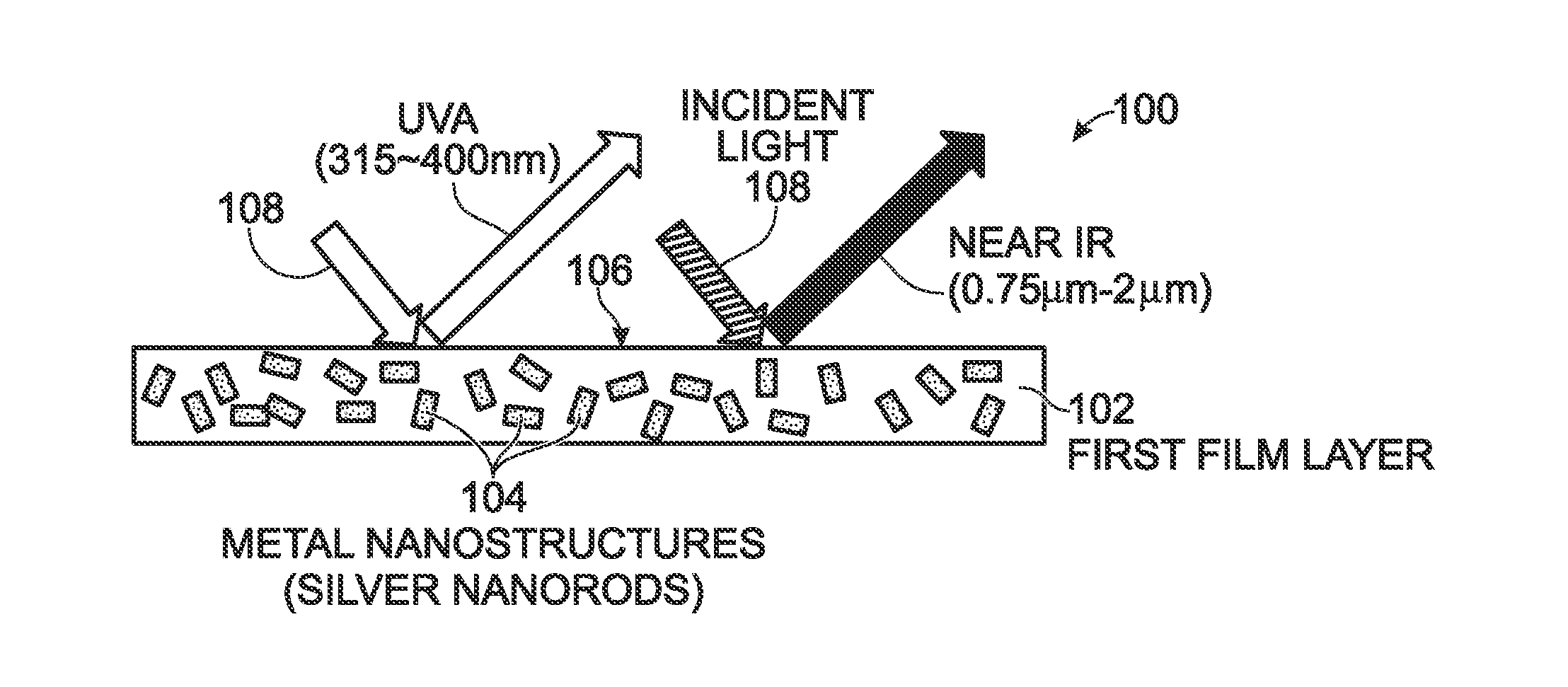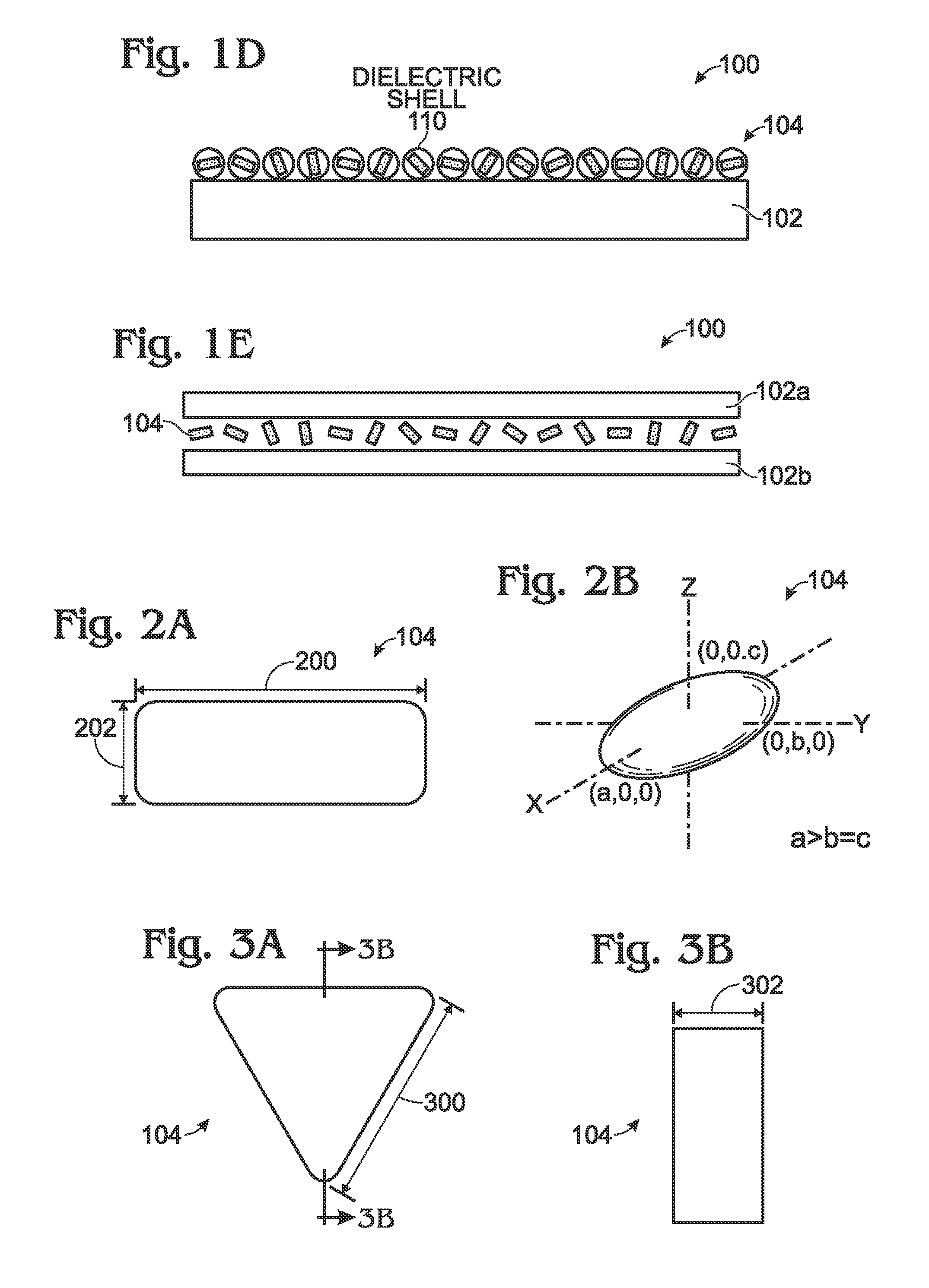Energy-Efficient Transparent Solar Film
a solar film and energy-efficient technology, applied in the field of energy-efficient transparent films, can solve the problems of unstable zinc oxide in acidic environmental conditions, easy chemical degradation of window films made from these nanocrystals, etc., and achieve the effects of enhancing the efficiency of solar energy rejection, high efficiency, and good stability
- Summary
- Abstract
- Description
- Claims
- Application Information
AI Technical Summary
Benefits of technology
Problems solved by technology
Method used
Image
Examples
Embodiment Construction
[0047]FIGS. 1A through 1E are partial cross-sectional views of an energy-efficient transparent solar film. The solar film 100 comprises a first film layer 102. Typically, the film is a dielectric material transparent at visible wavelengths of light. As used herein, the visible wavelengths of light are approximately in the range of 400 to 700 nanometers (nm), although the definition of the high and low values may vary depending upon individual perception and the degree of visibility. Metal nanostructures 104 are included in the first film layer 102 in a number of configurations. In FIGS. 1A and 1B, the metal nanostructures 104 are embedded in the first film layer 102. In FIG. 1C, the metal nanostructures 104 overlie the first surface 106 of the first film layer 102. In FIG. 1D, the metal nanostructures overlie the first film first surface 106, and are coated or encapsulated by a transparent dielectric shell material 110. In FIG. 1E the metal nanostructures 104 are sandwiched between ...
PUM
| Property | Measurement | Unit |
|---|---|---|
| aspect ratio | aaaaa | aaaaa |
| thickness | aaaaa | aaaaa |
| thickness | aaaaa | aaaaa |
Abstract
Description
Claims
Application Information
 Login to View More
Login to View More - R&D
- Intellectual Property
- Life Sciences
- Materials
- Tech Scout
- Unparalleled Data Quality
- Higher Quality Content
- 60% Fewer Hallucinations
Browse by: Latest US Patents, China's latest patents, Technical Efficacy Thesaurus, Application Domain, Technology Topic, Popular Technical Reports.
© 2025 PatSnap. All rights reserved.Legal|Privacy policy|Modern Slavery Act Transparency Statement|Sitemap|About US| Contact US: help@patsnap.com



